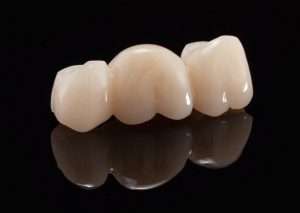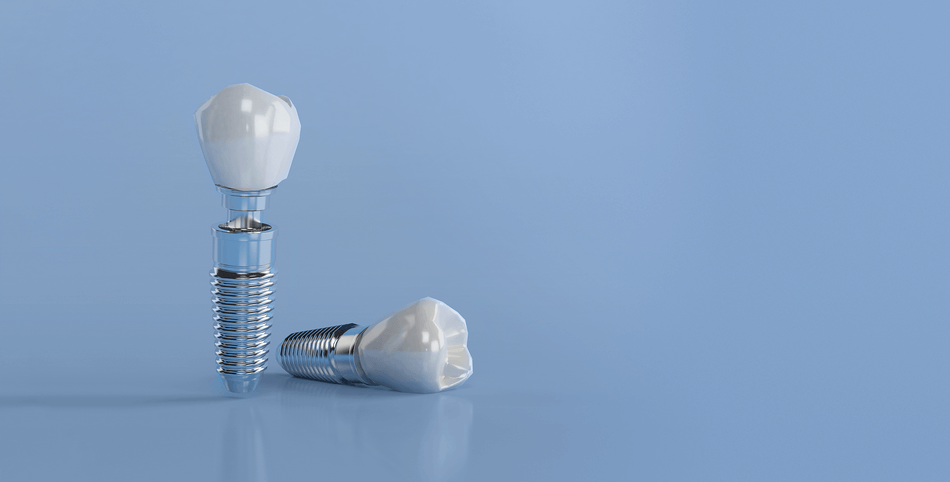Dental prosthetics are one of the most effective medical solutions that have greatly contributed to restoring both the aesthetic and functional appearance of natural teeth after tooth loss. With advancements in dental technology, various types of dental prosthetics have emerged to suit different cases of partial or complete tooth loss.
These prosthetics differ in type, materials used, cost, and method of placement — offering patients multiple options to choose the most suitable solution for their case.
In this article, we review all the details about types of dental prosthetics, including fixed and removable ones, along with the modern techniques that have changed the traditional concept of dental prosthetics.
Definition and Importance of Dental Prosthetics
Dental prosthetics are artificial replacements used to restore missing or damaged teeth, aiming to improve chewing and speech function while restoring the natural appearance of the mouth. These restorations are placed over natural teeth or in the gaps left after tooth extraction.
The importance of dental prosthetics lies in their ability to:
- Maintain the natural alignment of teeth and prevent neighboring teeth from drifting.
- Improve chewing and eating functions naturally.
- Restore self-confidence through an enhanced aesthetic appearance.
- Reduce temporomandibular joint (TMJ) issues that may result from tooth loss.
When Does a Patient Need Dental Prosthetics?
A patient may need dental prosthetics when there are gaps due to tooth extraction or loss for any reason, or in cases where the teeth are too worn down to be restored using fillings. Some people also opt for dental prosthetics for cosmetic reasons to improve the overall appearance of their teeth.
According to statistics, around 20% of adults over the age of forty use dental prosthetics — whether fixed or removable — at some point in their lives.
Fixed Dental Prosthetics
1. Dental Crowns (Metal, Porcelain-fused-to-metal, Zirconia)
Dental crowns are caps placed over damaged teeth to restore their shape, size, and strength. They are made from several materials:
- Metal crowns: Strong and durable but less aesthetic.
- Porcelain-fused-to-metal crowns: Combine strength and a natural look.
- Zirconia crowns: Provide excellent aesthetics similar to natural teeth with high strength.
2. Dental Bridges (Traditional bridges, Implant-supported bridges)
Dental bridges are used to replace one or more missing teeth by anchoring them to the adjacent teeth.
- Traditional bridges: Rely on neighboring teeth as supports.
- Implant-supported bridges: Attached to dental implants placed within the jawbone.
3. Veneers and Lumineers (Porcelain Veneer, Lumineer)
Veneers are thin layers of porcelain bonded to the front surface of teeth to improve their shape, color, and alignment. Lumineers are an ultra-thin version that require minimal or no tooth preparation.
Comparison Between Materials (Zirconia vs. E-max vs. Metal)
- Zirconia: High strength and acceptable translucency.
- E-max: Superior translucency and aesthetics but slightly less durable.
- Metal: Very strong but not suitable for anterior (front) teeth due to its color.
Removable Dental Prosthetics
Complete Dentures (Conventional, Implant-supported)
Used when all teeth are missing:
- Conventional dentures: Rest directly on the gums with the help of adhesive.
- Implant-supported dentures: Offer greater stability by being anchored to dental implants.
Partial Dentures (Metal, Acrylic)
- Metal partial dentures: More stable and longer lasting.
- Acrylic partial dentures: Less expensive and easier to adjust.
Types of Dental Prosthetics
First: Porcelain Prosthetics
Porcelain (ceramic) has long been one of the most popular materials for dental restorations due to its beautiful appearance, strength, and durability. For many years, porcelain prosthetics were considered the best type until zirconia restorations emerged.
A drawback of porcelain-fused-to-metal prosthetics is the presence of a metal base beneath the porcelain layer, which provides strength but may cause aesthetic and gum issues over time.
As the patient ages, the outer porcelain may wear off, revealing the metal layer — which can lead to gingival inflammation, food debris accumulation, and bad odor.

Second: Zirconia Prosthetics
Currently, zirconia dental prosthetics are considered the ideal and golden standard for restorations. They combine aesthetics, strength, and biocompatibility.
Since there is no metal substructure, zirconia prosthetics last longer and are less likely to cause gum inflammation or food trapping.
Their only limitation is that zirconia lacks the same level of translucency as E-max, making it more suitable for posterior (back) teeth.

Third: E-max Prosthetics
E-max dental prosthetics are considered the most aesthetic restorations available. They are known for their exceptional translucency and natural appearance, making them perfect for anterior teeth.
However, they are less resistant to heavy chewing forces, so they are not recommended for molars.

Fourth: BioHPP Prosthetics
BioHPP prosthetics are used mainly over dental implants. They are lightweight, durable, and provide a highly aesthetic gum-colored base.
They are ideal for full-arch implant restorations or large bridge cases where gingival tissue replacement is needed.

Fifth: PMMA Prosthetics
PMMA dental prosthetics are made from reinforced acrylic resin. They have a good aesthetic appearance but a shorter lifespan.
These are mainly used as temporary restorations, especially in full-arch implant cases.

Modern Technologies in Dental Prosthetics
Digital Prosthetics (CAD/CAM Technology)
The CAD/CAM system allows for the design and fabrication of crowns, bridges, and veneers using computer technology. It ensures high precision, reduced treatment time, and minimized human error, producing restorations with an excellent aesthetic outcome.
All-on-4, All-on-6, and All-on-8 Techniques
These modern implant techniques fix a full arch of teeth on just 4, 6, or 8 implants, providing great stability, a natural look, and reduced healing time and cost compared to placing individual implants for each missing tooth.
Nanomaterials in Prosthetics
New nanocomposite materials are being used to enhance resistance to bacteria, staining, and wear, while offering lighter weight and longer lifespan.
Nanoceramic materials also mimic the natural shine and smoothness of real teeth.
Factors to Consider When Choosing the Right Dental Prosthetic
Condition of remaining teeth: Determines whether you need a bridge, crown, or full denture.
Age and overall health: Elderly or diabetic patients may prefer removable options.
Budget: Prices vary based on material and type.
Aesthetic preference: Zirconia and E-max offer the most natural appearance.
Final Thoughts
Whether you’re missing one tooth or several, dental prosthetics offer an effective solution to restore your smile and chewing ability with confidence.
With today’s variety — from fixed to removable options, and advanced techniques like CAD/CAM and All-on-4 — patients can now enjoy a natural, functional, and beautiful smile tailored to their needs and budget.
At Wonders Dentistry, we use the latest technologies to ensure the highest precision and quality in dental prosthetics — helping you regain your natural smile with confidence.
Restore your smile confidently… start your journey with Wonders Dentistry today. Book your consultation now!








